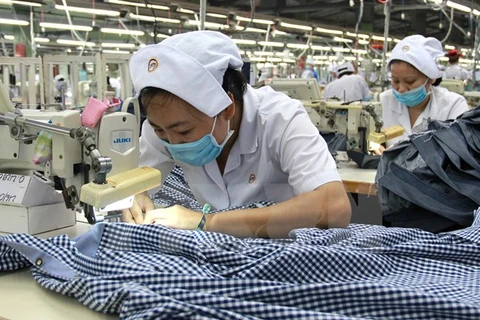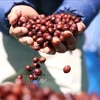Economic experts predicted that Vietnam’s exports to the US, mainly textiles and footwear, would continue to increase if local exporters could meet technical standards and requirements.
They stressed that the completion of negotiations on the Trans-Pacific Partnership (TPP) agreement in early October would help open bigger markets for Vietnamese exports, suggesting that Vietnamese businesses fully tap advantages brought by the deal.
Statistics from the Vietnam Textile & Apparel Association show that over 60 percent of Vietnam’s textile products are shipped to the US and Japan – the two key markets joining TPP negotiations – with a 17-percent tax rate. When the world’s largest trade pact is signed, Vietnamese textile producers will have greater opportunities to promote their export to the countries with a zero tax rate.
According to Vietnam’s Commercial Affairs in the US, Vietnam is the second largest garment exporter to the US, with stable growth in recent years, hitting 12.3 percent in 2014.
Aside from textile enterprises, footwear producers are also investing in producing materials that meet US requirements.
Nguyen Chi Trung, General Director of Gia Dinh Shoe Company, said his firm started operating an industrial cluster for producing materials in Binh Duong province, which would help satisfy the company’s production demand and supply materials for other enterprises.
The firm’s revenue in 2015 is expected to increase between 15-20 percent compared with last year, thanks to its efforts to enhance promotion activities in the US. Seventy percent of its products are being shipped to the US this year.
Toan Thinh, a company that specialises in silk production, also plans to expand exports to TPP member countries, especially the US.
According to Phan Thi Thanh Xuan, General Secretary of the Vietnam Leather , Footwear and Handbag Association, the Government should issue a decree on support industries to encourage investment in material production.
She also underlined the need for enterprises to improve the quality of human resources and labour productivity; promote the application of advanced management models; and shift production establishments to rural areas to take advantage of abundant workforces, thus reducing production costs and the price of products.
The American Market Department under the Ministry of Industry and Trade also suggested promoting closer connections between domestic producers and material suppliers in order to make the most of the TPP deal.-VNA
























